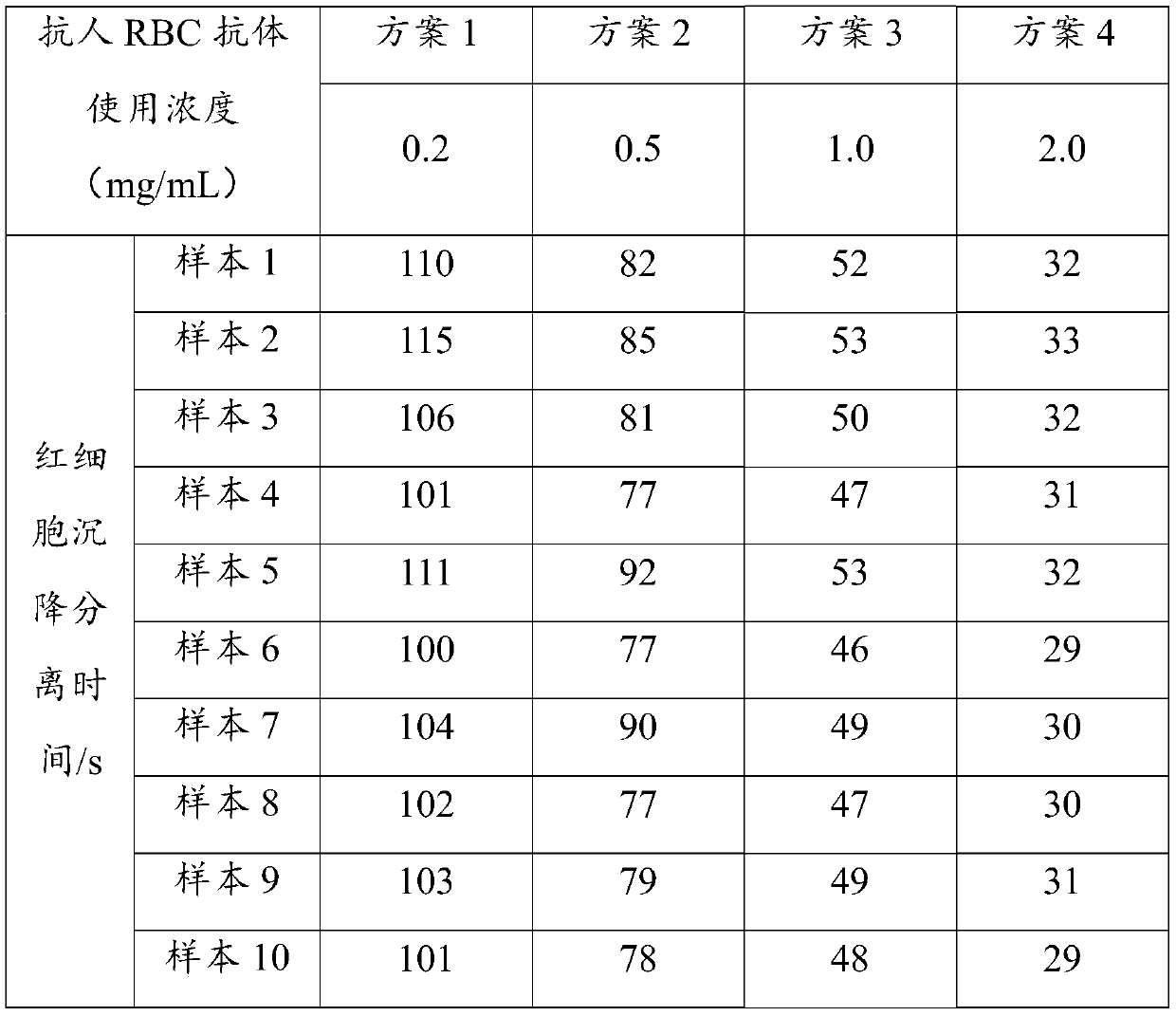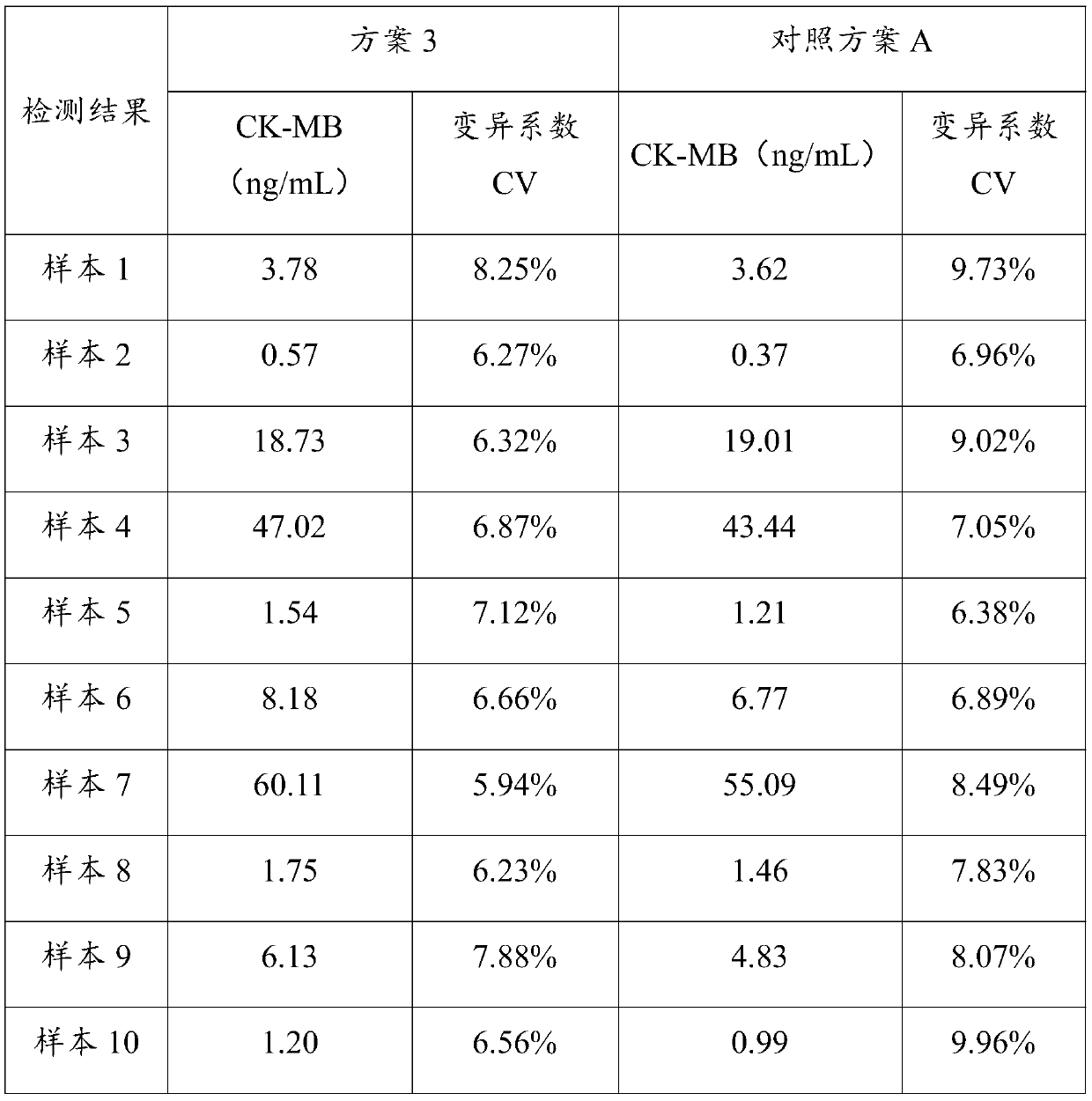Method for quickly separating RBCs used for immunochromatography kit
An immunochromatographic detection and red blood cell technology, applied in analytical materials, measuring devices, instruments, etc., can solve the problems of flow influence of chromatographic reaction, background interference, influence of immunochromatographic reaction, etc., to ensure biological activity and good biological phase. The effect of capacitive and good binding ability
- Summary
- Abstract
- Description
- Claims
- Application Information
AI Technical Summary
Problems solved by technology
Method used
Image
Examples
Embodiment 1
[0034] The characteristics of the separation of red blood cells in this implementation include: carboxyl polystyrene microspheres at 3.0%, polylysine at 0.05%, and anti-human RBC antibodies at 0.05 mg / mL. The preparation method is as follows:
[0035] S1. Preparation of polystyrene microspheres modified with polylysine
[0036] ① Take 1.0 mL of 3.0% carboxyl polystyrene microspheres, add it to 9.0 mL of microsphere diluent, and ultrasonically disperse for 10 minutes to obtain a uniformly dispersed microsphere suspension;
[0037] ② Under rapid stirring, add 10-fold concentration of 1-(3-dimethylaminopropyl)-3-ethylcarbodiimide hydrochloride (EDC) / N to the above uniformly dispersed microsphere suspension -Hydroxysuccinimide (NHS) activator to activate carboxyl polystyrene microspheres for 10-120min. In the activation reaction system, the reaction concentration used by EDC is 100 mM, and the reaction concentration used by NHS is 100 mM.
[0038] ③After the activation, the reaction sol...
Embodiment 2
[0047] The only difference between this embodiment and Embodiment 1 is that the concentration of polylysine used in this embodiment is 0.1%.
Embodiment 3
[0049] The only difference between this example and Example 1 is that the active group dendrimer used in this example is dendrimer polyamidoamine, and its concentration is 0.1%.
PUM
 Login to View More
Login to View More Abstract
Description
Claims
Application Information
 Login to View More
Login to View More - R&D
- Intellectual Property
- Life Sciences
- Materials
- Tech Scout
- Unparalleled Data Quality
- Higher Quality Content
- 60% Fewer Hallucinations
Browse by: Latest US Patents, China's latest patents, Technical Efficacy Thesaurus, Application Domain, Technology Topic, Popular Technical Reports.
© 2025 PatSnap. All rights reserved.Legal|Privacy policy|Modern Slavery Act Transparency Statement|Sitemap|About US| Contact US: help@patsnap.com



